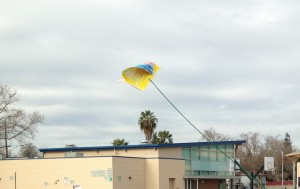What Makes Elementary Science so Exciting
Teaching elementary science is one of the rewards of teaching primary grade students. What makes elementary science so exciting is that I have the privilege of introducing students to how to observe their world and how they can learn from their observations.
Year after year, I am surprised and elated to see how excited students become when we begin to study matter and how matter can change from one state to another. We jokingly talk about watching the grass grow as a euphemism for tedium. However for young learners, observations about their world and how to make sense of these observations in scientific ways in spellbinding and highly dramatic, while perhaps bordering on the monotonous for the more experienced observer. In out study of matter, some of our recent observations include watching ice melt, mixing salt with water, and watching a balloon inflate.
While everyday occurrences for most of us, these simple acts demonstrate the transformation of solid to liquid, the constancy of solid when mixed with liquid, and that the invisible gas we call air will fill whatever container we force it into. One day, we even drew a chalk line around the perimeter of a large puddle on the playground and watched as the water receded from its chalky border and the wind hastened its evaporation. Each recess, students ran to the puddle to see how much smaller it had become. After our extended drought, how wonderful to have some rain filled puddles and then a sunny break to watch Mother Nature work her evaporative miracle.
One of our more dramatic science projects in our study of matter are include dropping baking soda from a balloon placed over the mouth of a water bottle into the pool of vinegar in the bottom of the bottle. The resulting bubbling gas filled first the bottle and then the balloon–beyond the bursting point–accompanied bysqueals of excitement and awe. Truly an exciting and unforgettable moment.
Another scientific favorite was placing an “empty” 1.5 liter bottle with a balloon covered mouth into a container of hot water. While I call the bottle empty, one of the most important concepts my teaching partner and I have tried to demonstrate to students is that gas is all around us and even though we cannot see it, that doesn’t mean it doesn’t fill cups, bottles, and the space that surrounds us. Students were spellbound to watch the balloon inflate quickly when placed in the hot water and slowly deflate when take out. The process was accelerated by moving the bottle quickly from the container of hot water into a container of cold tap water. Sounds of delight came from all around the classroom as students observed repeatedly the same phenomenon.
A joyful experiment was what makes a simple kite fly. Each student made their own kite and attempted to make it take flight. There were varying degrees of success, but the mystery of flight held them spellbound.
Some days when I use my microwave, it is kind of like those simple elementary science experiments. As I was wiping out food cooked to the exploding point, I found myself mulling over the elementary science of why and wishing I had taken some simple steps to contain the explosion more effectively and minimize my unpleasant cleanup task. Still, I suppose my wonder over the “why” and “what would happen if” over my dreary domestic disaster means that along with my young students, I love observing the world around me and trying to figure out what makes it tick. That is what makes elementary science so exciting.



